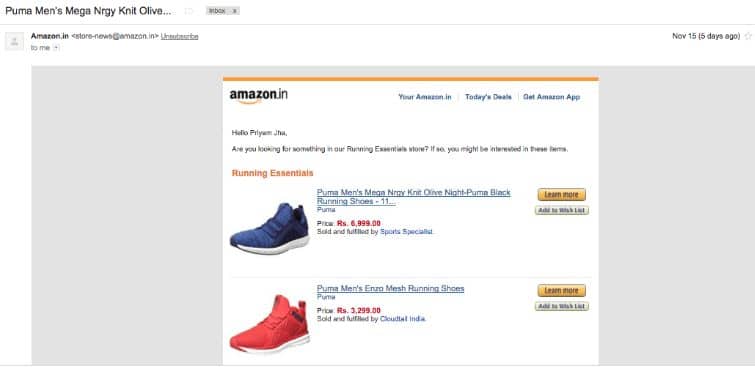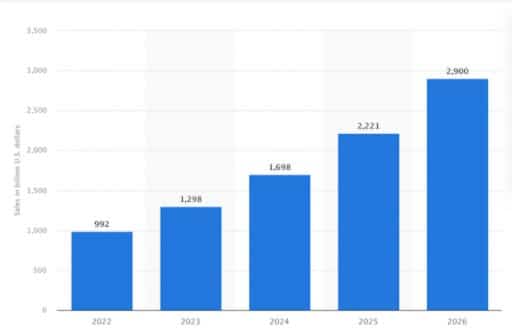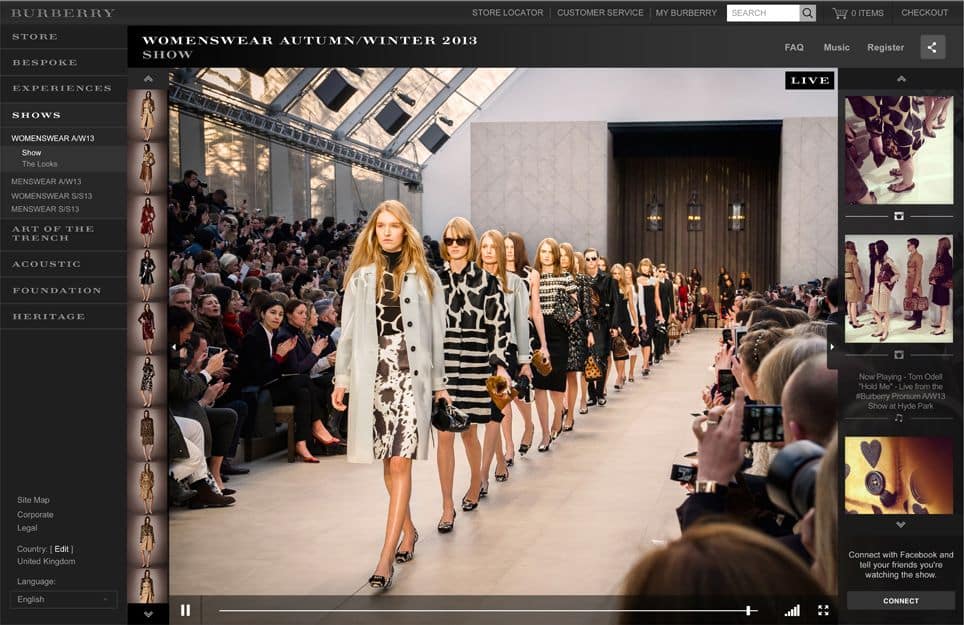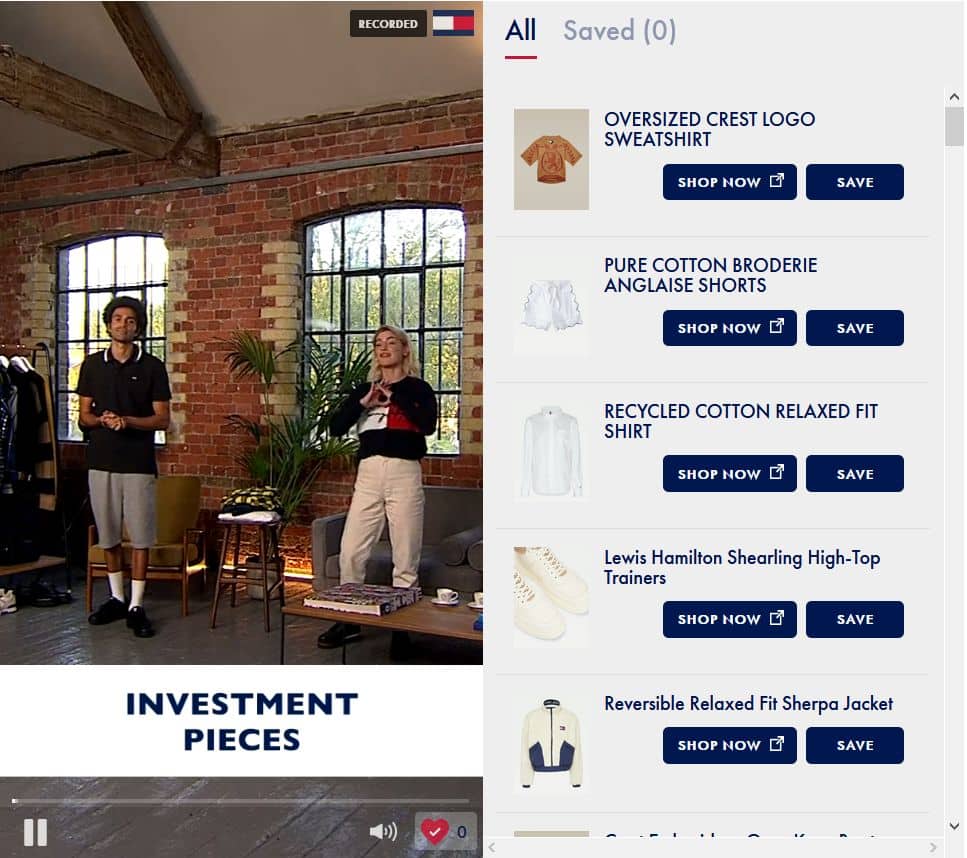The D2C industry, also known as Direct-to-Consumer industry, refers to a business model where companies sell their products or services directly to consumers without intermediaries or traditional retail channels. This approach enables businesses to have greater control over the entire customer experience, from product development and production to marketing, sales, and customer service. The rise of e-commerce platforms, advancements in digital marketing, and shifting consumer behaviors have facilitated the growth of the D2C industry. In this article, Kyanon Digital will help you explore the key trends that will shape the D2C industry by 2025.
1. Hyper-Personalization
71% consumers in a McKinsey study anticipate personalized interactions with brands, and 76% display disappointment when such personalized experiences are not provided. Businesses that succeed in personalization efforts generate 40% higher revenue from these activities compared to average competitors. Clearly, personalization is not a new trend but more like a necessity, and with the rising demand from customers and increasing competition on the market, hyper-personalization is the new reality that firms need to adapt to.
Hyper-personalization takes customer experiences to new heights by leveraging advanced technologies, real-time data, and a deeper understanding of individual customers to deliver highly tailored and contextually relevant experiences. It goes beyond static or rule-based personalization approaches and focuses on dynamic, one-to-one interactions. Hyper-personalization efforts can vary from product recommendations and marketing messages to packaging and pricing.

Amazon’s one-to-one email is sent to a user who searches for olive green running shoes, but then closes the search without purchasing.
Source: Instapage

Spotify’s Live Concert feature sends emails to its users about live events with their favorite artists, along with an option to buy tickets.
Source: Instapage
However, it is worth noting that firms investing in hyper-personalization need to balance between personalization and intrusiveness and to ensure they have proper data privacy and security measures in place to protect customer information while delivering personalized experiences.
2. Corporate Social Responsibility (CSR)
Global tragedies in recent years, disease, economic gloom, war, civil unrest, social injustice, etc., have exerted a heavy mental toll on consumers, pushing them towards more sustainable decisions in their daily life. Customers are increasingly aware of the fact that cheap but irresponsible purchases now can cost humankind a high price in the future. Focus on sustainability not only grows in developed countries but also in developing economies. Indonesian consumers’ emphasis on sustainability has increased 24% while Ecuadorian counterparts’ demand for sustainable practices has rocketed by 120% (wef).
This trend does not only span countries but also industries. For example, in fashion and textiles, more than half of C-level executives stated that consumer demand is the driving force behind their sustainability efforts and prompts their responsible sourcing practices (wef). In the tech industry, consumers are expecting firms to show more commitment in sustainable electronic waste management, electronic device recycling, transparent and responsible use of customer data, social content ethical standard upholding, etc.

Customers are also increasingly aware of deceptive practices such as greenwashing. They seek for authenticity. Therefore, brands need to really invest in CSR and do environmental, social, and governance (ESG) reporting. Moreover, as a result of hyper-personalization, the virtual marketplace will recommend products or brands that resonate with customer values, with their values weighing more and more heavily on CSR. Brands that do not demonstrate efforts in CSR will be left out. A study from Forbes shows that customers are four to six times more likely to buy from brands with purposes beyond making profits.
3. Social Commerce
Social media platforms provide a unique benefit over brand websites or third-party e-commerce sites because customers can conveniently make purchases where they are already spending time, giving them a seamless experience, and brands can collect valuable first-party customer insights from these social media interactions. Moreover, research shows that 35% of online shoppers on e-commerce platforms choose not to proceed with their purchases because of compulsory account registration. Social commerce allows users to buy directly from brands without frustrations of creating an account.
Sales deriving from social commerce are expected to grow strongly and continuously with a compound annual growth rate of 30.8% over the period of 2022-2026. Global sales on social media are estimated to reach $1.298 billion in 2023 and a staggering $2,900 billion in 2026.

Value of social commerce sales worldwide from 2022 to 2026
Source: Statista
D2C brands will increasingly leverage social commerce features, such as in-app purchasing, shoppable posts, and influencer marketing, to reach and engage with their target audience directly. However, firms need to choose the right platforms and approaches to meet customer needs and preferences. For example, WeChat is the driving force behind social commerce in China while Facebook is the most popular social site among US consumers.
4. Live Commerce
Live commerce is another powerful driving force for the D2C industry growth, having succeeded in China, Asia, and now gaining momentum in Europe and the US. This powerful approach allows real-time product demonstrations and interactive engagement, creating a unique shopping experience for consumers. A study from McKinsey shows that firms implementing live commerce reported their conversion rates approaching 30%, which is ten times higher than conventional e-commerce.
Live commerce is not limited to small sellers. Luxury brands have embraced live commerce as a way to showcase their products and engage with their target audience in a more personal and immersive manner. Burberry, Louis Vuitton, and Tommy Hilfiger are some notable pioneers in the luxury sector to adopt live streaming.

Burberry’s “See Now, Buy Now” stream on Tmall
Source: Flux Panda

Tommy Hilfiger’s live stream on its global website
Source: Flux Panda

L’Oreal’s shoppable live streams feature celebrities and influencers doing makeup tutorials and skincare routines.
Source: Flux Panda
5. Extended Reality (XR)
Extended reality (XR) is an umbrella term that encompasses various immersive technologies, including virtual reality (VR), augmented reality (AR), and mixed reality (MR). With intense competition arising from the astonishing variety of products and frequent price discounts,
XR technologies are increasingly utilized by brands to improve customer experience, maintain brand differentiation, and reinforce customer loyalty.
XR features such as 3D environments, gamification, and avatars can accelerate customer experience to new levels, making the whole customer journey more enjoyable and engaging. Many D2C brands have incorporated VR technology into their mobile apps and allow customers to see and try products in compelling ways.

L’Oreal “Makeup Genius” app allows users to virtually try on different makeup products and receive personalized recommendations based on their features and preferences.

Virtual try-on on Warby Parker’s mobile app
In physical retail locations, we can anticipate an increasing number of stores incorporating AR technologies like virtual mirrors. These mirrors enable customers to try on numerous items without the need to change clothes or physically handle the products. Once they find items they are interested in, they can be directed to the specific location on the shelves where those items are located. Besides, virtual showrooms, allowing customers to see products in 3D, might even replace traditional physical stores.
Hopefully the article has given useful information about key trends that will shape the D2C industry in the near future. Firms that seek to develop direct and meaningful relationships with customers need to keep updated and embrace new trends. Kyanon Digital is a leading provider of consulting services and solutions for digital transformation, especially in digital commerce and customer experience. Contact us now if you want to keep up with the competition and build direct relationships with your customers.


